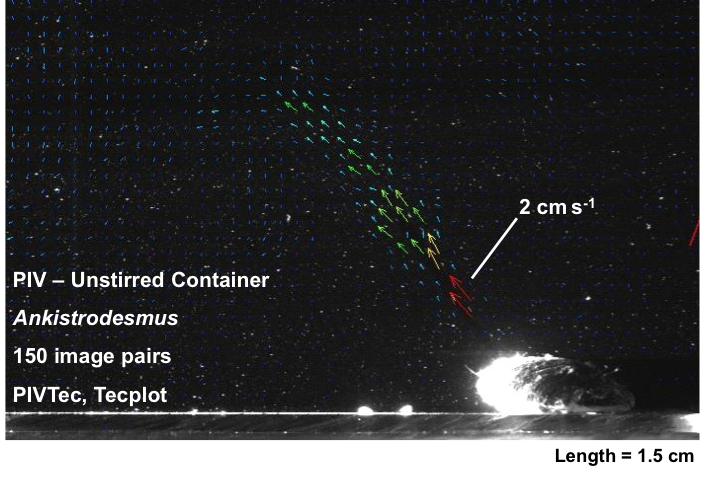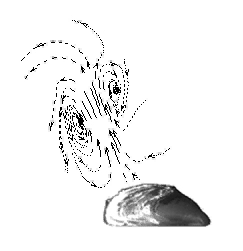Mussels Blow Rings and Affect Water Mixing

Professor Joe Ackerman was newly minted PhD when he first took note of mussels 'blowing rings' and has come back to examine this behavior in collaboration with his former MSc student, post-doctoral fellow and current professor at Williams College, Mike Nishizaki. The two scientists are now investigating how mussel feeding behavior can impact local mixing.
Mussels are benthic suspension feeders which means they feed on materials that are suspended in water (such as planktonic organisms) using siphons that bring water in and out. This behavior impacts local water clarity, dissolved oxygen and nutrients.
Ackerman and Nishizaki studied two freshwater invasive zebra mussel species of the family Dreissenidae, Dreissena polymorpha and D. rostriformis bugensis. Both mussel species are very successful invaders found in dense colonies in areas of slow flowing water - their potential impact on local water mixing is huge.
They determined how mussel siphonal jets might affect mixing using a two-tiered approach that combined experimental and theoretical techniques. First they assessed flow patterns using flow visualization (dye/labeled algae) and particle imaging velocimetry (PIV), which uses pulsed lasers to visualize particles in flow. Then they incorporated these hydrodynamic characteristics (jet velocity and amount of vorticity or swirling motion in the water) into a computation fluid dynamic (CFD) model to predict water column mixing.
Their first approach documented four distinct feeding/siphonal jet behaviors: (1) exhalant jet that was a fast pulsatile jet with high vorticity, (2) streaming jet with moderate speed and vorticity, (3) slow flux with low speed and vorticity and (4) inhalant jet which was a "cough-like" response.
Even though the velocity and vorticity of these mussel exhalant jets didn’t vary greatly, the CFD revealed significant effects of these four behaviors on mixing in the water column with the most mixing occurring during slow flow and with behavior 1, the exhalant jet.

This research has documented dreissenid mussels behaviors that have not been seen in any other bivalve ecosystem. Because the behavior can lead to different levels of local mixing, this could potentially help explain their success and impacts on aquatic ecosystems.
With the preliminary data and CFD model set up, the Ackerman lab is now interested in bringing in undergraduate students to help run the model under a variety of different parameters to learn more about the impact of these ecosystem engineers.